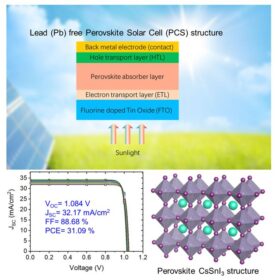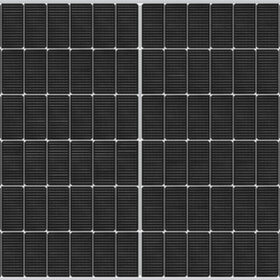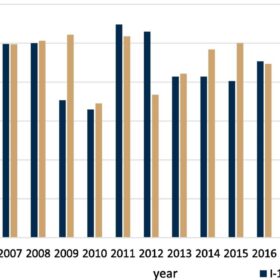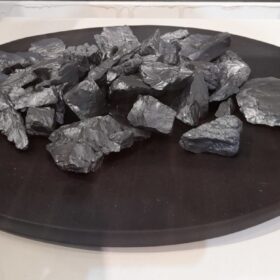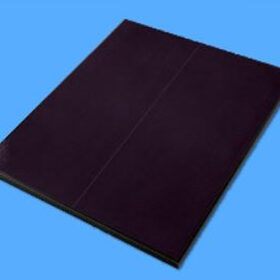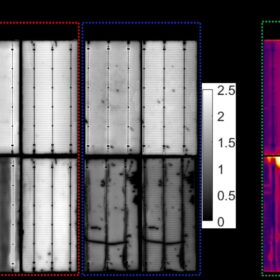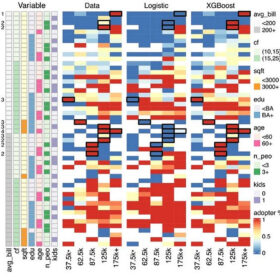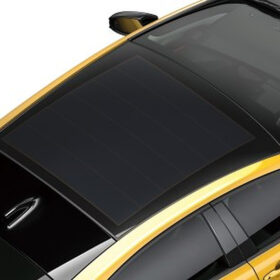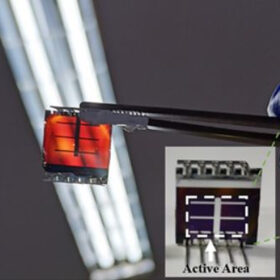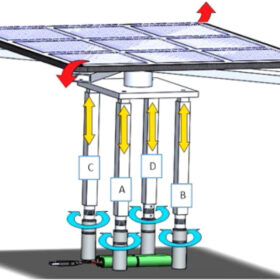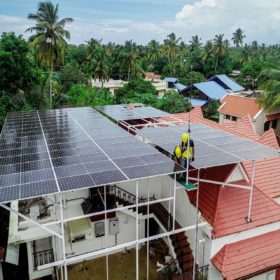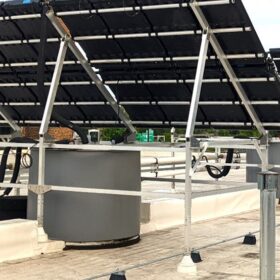New perovskite solar cell design promises 31.09% efficiency
Chinese researchers have developed a solar cell using CsSnI3 perovskite, known for its unique phase transitions and near-IR emissions. By simulating the device with various electron transport layers (ETLs) and hole transport layers (HTLs), they determined that the optimal cell could be created using a titanium oxide (TiO2) ETL and a nickel(II) oxide (NiOx) HTL.
Sharp unveils 570 W TOPCon solar panel with 22.07% efficiency
Sharp’s new IEC61215- and IEC61730-certified solar panel offers a power conversion efficiency of 22.07% and a bifaciality of more than 80%. The operating temperature coefficient is -0.30% per C and its power tolerance is 5%.
Researchers assess degradation in PV systems older than 15 years
Scientists have used the US National Renewable Energy Laboratory’s (NREL) HOMER software to calculate the degradation of solar panels deployed in two rooftop PV systems operating in Germany since 2003. Their calculations focused on the energy productivity of the systems.
Tongwei led global polysilicon capacity in 2022, says Bernreuter Research
The world’s top four largest polysilicon producers in 2022 were Chinese companies, led by Tongwei with 345,000 metric tons (MT), followed by GCL Technology, Daqo, Xinte, and Wacker Chemie.
Kaneka presents 29.2%-efficient 2T silicon-perovskite tandem solar cell
Kaneka’s two-terminal tandem perovskite solar cell has achieved the highest efficiency ever recorded for such a device based on an industrial Czochralski (CZ) silicon wafer. It has an open-circuit voltage of 1.929 V, a short-circuit current density of 19.5 mA cm−2, and a fill factor of 77.55%.
Scientists warn of heat-induced failure risks in HJT glass-backsheet PV modules
University of New South Wales researchers have identified four failure modes caused by damp heat in heterojunction solar panels with a glass-back sheet configuration. The failures could result in power losses ranging from 5% to 50%.
Machine learning method to identify residential PV adopters, reduce soft costs
Researchers have defined a new machine learning-based methodology that reportedly reduces customer acquisition costs by about 15% or $0.07/Watt. It is based on an adapted version of the XGBoost algorithm and considers factors such as summer bills, household income, and homeowner’s age, among others.
Toyota uses Kaneka’s 26.63%-efficient solar cells for electric vehicle
Kaneka said the cells will be utilized in the roof glass of Toyota’s Prius PHEV electric car. It plans to begin full-scale delivery of in-vehicle PV products this year.
4T silicon-perovskite PV cell hits 26.03% efficiency with transparent contact
Indian scientists have built a four-terminal silicon-perovskite solar cell that uses a top perovskite device with an efficiency of up to 17.1%. The top cell incorporates a room-temperature sputtered transparent conducting electrode (TCE) as a rear electrode.
Low-cost, portable sun-tracker for offgrid solar
Mauritian researchers have developed a solar tracker prototype that increases current by around 37%. The device uses a simplified and mechanical tracking system.

